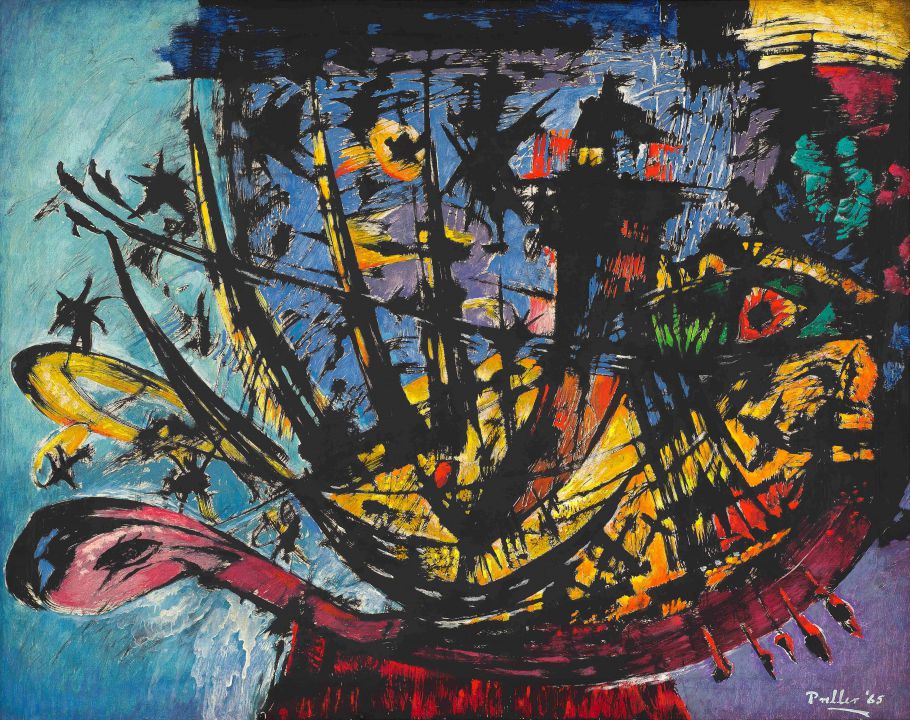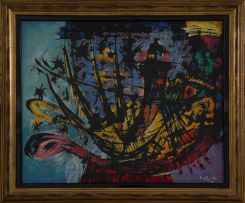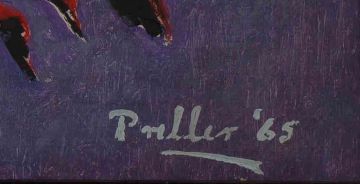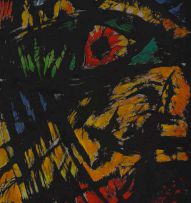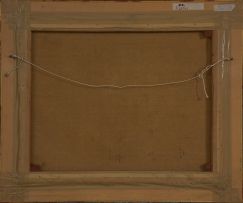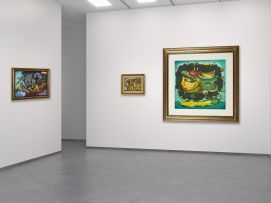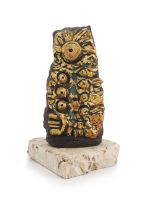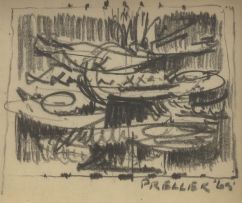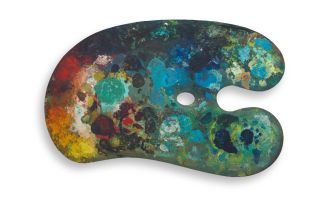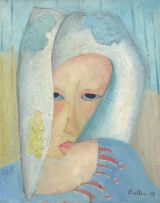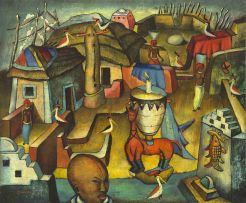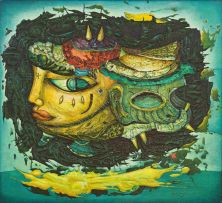19th century, Modern, Post-War and Contemporary Art, Decorative Arts, Jewellery and Wine
Live Virtual Auction, 10 - 11 May 2020
Important announcement regarding the terms and conditions of this auction.
This auction is being conducted during a National State of Disaster in South Africa and in accordance with the various Regulations passed by the Government in South Africa in response. Presently, South Africa’s National State of Disaster is at Level 4, which limits certain commercial activity. Read More →
Terms and Conditions for Online Auctions (517.08 KB)
Privacy Policy for Online Auctions (198.46 KB)
Paintings Evening Sale
About this Item
signed and dated '65
Notes
In the catalogue to the 1972 Alexis Preller retrospective exhibition at the Pretoria Art Museum, Esmé Berman writes of the process of "repetition, adaptation, variation and transformation that characterises the artist's work".1 He reuses and reinvents familiar objects throughout his career - eggs, candles, mangoes, egrets, fish and less commonly, sailing vessels.
The boats are at times fully representational, such as in The Island, Seychelles (1950) where the vessels are recognisably Seychelloise fishing pirogues, and in the large-scale mural Discovery (1959-1962) where a Portuguese caravel sails across the background. In the present lot, however, the vessel is largely abstracted, but given Preller's interest in archaic Greek art, the suggestion of hull, multiple masts and a bank of oars in the lower right portion perhaps reference an ancient Mediterranean galley. The apparently impulsive black calligraphic flourishes, blots and scribbles that overwrite Preller's characteristic palette of turquoise, coral, emerald and orange, create a palimpsest of implied text and image.
After working in relative seclusion on the large-scale Discovery mural, Preller re-emerged, after an absence from the gallery scene of four years, with an exhibition of new work at the Pieter Wenning Gallery in Johannesburg in 1962. The show included entirely abstract works, such as The Golden Fleece (1962), for the first time. This signalled a new direction for the artist, which he explored more fully the following year in the Temple of the Sun series. His interest in abstraction was spurred in part, according to Karel Nel, by news reports of Soviet and US space exploration,2 and this broadened his focus from the mythical African past that had dominated his subject matter in the 1950s and early 1960s, to celestial visions of an indeterminate universal future.
1. Esmé Berman (1972) Alexis Preller, exhibition catalogue, Pretoria: Pretoria Art Museum, page 1.
2. Esmé Berman and Karel Nel (2009) Alexis Preller: Volume II, Collected Images, Johannesburg: Shelf Publishing, page 203.
